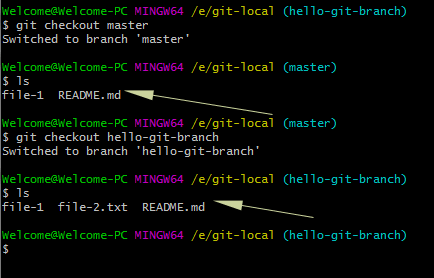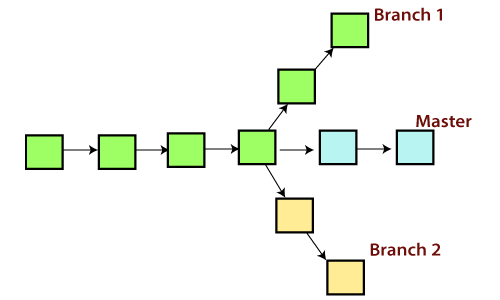
Running Git Bash on the local machine and pulling the Github repo.The next section describes the following: For beginners, what actually creating a branch involves and what it produces should keep reading the tutorial.
#Create new branch github how to
If you just required the syntax of how to create a new branch, the above command should work for you. The command for creating new branch locally:Ī local branch namely “hello-git” should have been created.Ī step by step guide of creating branches for beginners Suppose you want to create a new branch in Git with the name of “hello-git”. For details, see the section after the general command below.

#Create new branch github update
If you choose to remove the master branch, make sure you update any dependencies.

Removing the master branch is recommended to avoid any confusion around what branch is the default one. You can remove the master branch completely. When they make changes, the link to create a merge request will automatically be pointed at the main branch. The next time someone clones your repository, they will automatically be on the main branch. Go to Admin Area -> Settings -> Repository.You will then see an option to start a merge request which we are not going to do because we want main to become the default branch, not master. Use the move command in Git to copy the entire master branch to a new branch called main. Making the change to your GitLab repository is simple. # Create a new tracking connection with the new origin/main branch GitHub now allows you to rename any branch, including the default branch, from the web.ġ) Rename the default branch from the web:Ģ) Update your local clone: # Get the latest commits and branches from the remote You can do this on either GitHub or GitLab as follows. The local branch has been renamed, but we now need to make these changes to the remote repository as well. Your branch is up to date with 'origin/master'.If the renaming was successful, you should see: To rename the master branch in your existing Git repository to main:ġ) Rename the local master branch to main: git branch -m master main Renaming the default branch for an existing repository New repositories on SESYNC GitLab Service use main as the default branch name. You are all set! When pushing to the remote repository use: git push origin main New repositories use main as the default branch name. The initial first branch will now be named main. Initialize your new Git repository: git init Note: If the value is unset, faultBranch defaults to master.Ģ. Now all new repositories you create with git init or on the RStudio or Jupyter servers will have a default branch named main. Override the default branch name value: git config -global faultBranch main This FAQ will help you set the default name in your own git repository to main (or any other term your team has chosen) and help you fix the conflict if it occurs.īefore initializing a new Git repository you will have to set the default to main.įirst, open a terminal window either by connecting to the ssh gateway or opening a terminal tab on the RStudio or Jupyter server. GitLab projects are created with the default branch as master, unless otherwise specified – New repositories created on SESYNC GitLab Service will use main as the default branch.Ī conflict occurs when the local and remote default branches for both GitHub and GitLab have different names. Existing repositories that have master set as the default branch will be left as is. This is the case in our current version of git (git version 2.28.0).Īs of October 1, 2020, any new repository you create on will use main as the default branch. When you initialize a new git repository from scratch with git init or using the new repository dialog on the RStudio server, git creates a default branch with the name master. Changes are ongoing across all git platforms so this FAQ may be out of date by the time you read it! NOTE: See the note on terminology in our basic git lesson for more background on why default repository names are changing from master to main across git platforms.


 0 kommentar(er)
0 kommentar(er)
